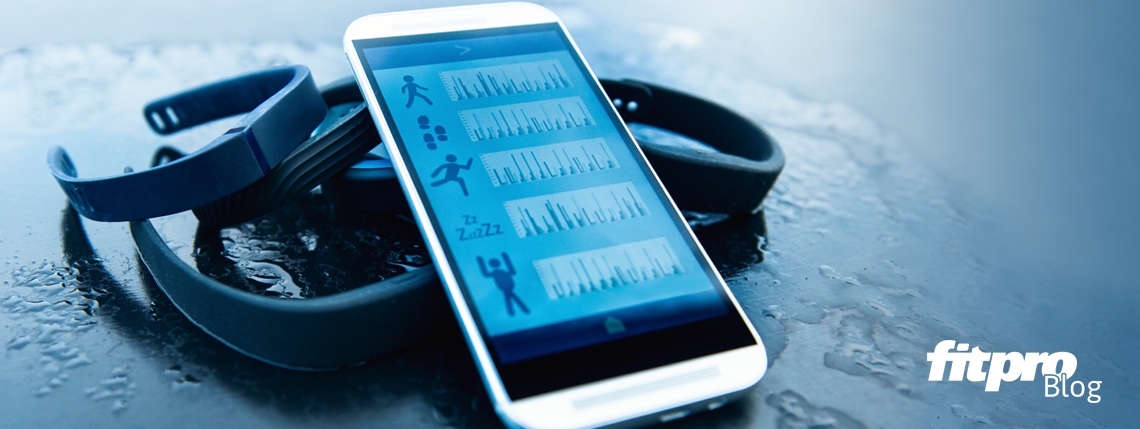Although commonplace now, wearable fitness tech still largely lacks the ability to provide accurate training data. So, asks Dr Mark McKean, why does the research still find value in such kit?
The fitness industry has always loved being ahead of the game, with interactive cardio equipment, new training toys, and multiple forms of electronic engagement. Wearable technologies have quickly grown in both type and complexity. Disruptive technologies are new, emerging technologies that unexpectedly displace an established or accepted technology. Disruptive technologies have the capacity to alter our lifestyles, change the way we work, and influence both business and the global economy. There has been a major influx of wearable disruptive technologies in the fitness industry and many of these have been embraced by both clients and fitness professionals. At the most basic level, some of these technologies have poor reliability and accuracy, and some have been shown to be more accurate for specific – but not all – purposes.
Tracking activity
Assessing and monitoring physical activity has become more common and easier with the help of a range of simple devices that can be worn via mobile device apps. These devices and phones use a range of technologies from simple pedometers through to complex triaxial accelerometers and gyrometers. A range of factors influence the accuracy of these devices, including where they are worn on the body, what variables they are trying to measure, and what information is programmable during setup.
Stackpool et al compared a range of current and well-known activity trackers that manufacturers claimed could track varied activities such as climbing stairs or playing basketball, energy expenditure and sleep behaviour1. In most cases, these easily purchased devices generally overestimated energy expenditure during basic activities such as walking and running, and underestimated activities such as basketball. Generally, they were within 10% of the correct number of steps taken during slower, walking-based activities, but less accurate during more varied activities such as agility drills and court sports. The authors also report that common GPS monitors, which rely on access to satellites (the more the better) via clear skies, have also been found to be inaccurate for slow walking, but slightly more accurate in running. While there has been some research into the use of these devices, there appears to still be little reliability in the measures they produce, and they are still considered to have low validity.
Another systematic review by Gierisch et al reported on the effectiveness of these devices for physical activity, weight, and patient satisfaction outcomes, and to describe moderating factors that may impact effectiveness (i.e., population characteristics, location where device is worn on body, or device role in overall intervention approach)2. The authors suggest the small positive effects produced by interventions using such devices may not result in a significant impact on physical activity or weight loss.
Smartphones also have a range of available sensors and apps that provide monitoring options. Many of these rely on a proprietary algorithm built into the app that accounts for where you carry the device, e.g., pocket, backpack or arm. Some of these apps report directly to a database and provide general information on your behaviour, as well as report on your own performance and, as a result, hope to influence your behaviour. The systematic review by Bort-Roig et al verified that most studies using smartphones failed to consider the validity of the phone-based assessment of physical activity3 and, further, it is still unclear whether this feedback does in fact disrupt current behaviour for the long term, in the way the manufacturer suggests.
The current opinion on the range of activity tracker devices is that they generally provide low-quality information about physical activity and are not yet accurate at monitoring energy expenditure, but that the information may still promote an awareness of physical activity.
Tracking velocity-based training
There has been a significant increase in research recently that reports on the benefits of monitoring movement velocity in strength training exercises – and a corresponding increase in interest in tools that perform this monitoring. Authors Jovanović and Flanagan highlight the value of using such devices to provide performance feedback and promote more specific training for an increased adaptive response4. Velocity-based training (VBT) devices have been used to determine 1RMs, suggesting that velocity can be used to predict 1RM in instances where it may be a safer option than an actual 1RM test5. The value of such linear transducers (energy converters) is that they provide immediate feedback via an app that shows the velocity of each rep, and the velocity loss between reps in a set.
Research has shown that training that involves moving a load with the greatest effort creates broad adaptations and has a velocity-specific response6. On any given day, the neuromuscular system can operate at different levels; if fatigued, the individual may still be able to lift the same load, but the overall velocity of the lift may be slower. Unless velocity is being measured, this is hard to see with the naked eye. Pareja-Blanco et al showed that performing reps at maximum concentric velocity compared to slower velocities provided greater neuromuscular adaptations and athletic performance7.
There is an abundance of new research that currently supports the value of VBT; however, the issue has always been the accuracy of the devices used to assess the movement velocity. There are currently several wearable technologies that provide information on velocity, as well as several types of systems to assess movement velocity. Typically, these come in the form of smartphone-based technology with two measurement options. The first option involves the user wearing a device (typically a linear accelerometer) attached to the body, and this device reports data back to the app on the phone. The second option involves the app accessing the high-speed camera on your smartphone and recording the movement on video, which the app then assesses with regards movement velocity.
Banyard and colleagues compared the accuracy of a device worn on the arm, a device worn attached to a barbell, and a high-speed camera app system in predicting a 1RM for the free weight back squat in trained individuals8. Data from each device was plugged into an algorithm and calculated against the actual 1RM achieved on three different testing dates. The results showed that the different tools exhibited only moderate reliability in predicting 1RM scores on different days. The authors go on to point out that, even though its accuracy is within 90% of 1RM, it holds similar validity when comparing the results with a range of other 1RM prediction methods, including formulas.
All current VBT users and experts agree that while they accept the devices and apps are not 100% accurate, the value in such measuring tools is in the practical application and the associated coaching. Users can see a visual representation of the results and compare rep by rep velocity, and learn how to have a better and more consistent approach to each rep, making the outcomes more valuable with getting ideal velocities more constantly and knowing where they break down.
In summary, there has been an increase in the use of wearable devices and technologies that can be applied to the training environment. The accuracy of such devices is still questionable in the true sense of reliability and validity, but as tools to effect behavioural change, they appear to be showing good evidence that this is potentially where they may have most value.
30-second article
- Activity trackers generally provide low-quality information about physical activity, and are not yet accurate at monitoring energy expenditure
- There has been a significant increase in research into the benefits of monitoring movement velocity in strength training, and a corresponding increase in interest in tools that perform this monitoring
- Research into the accuracy of a device worn on the arm, a device worn attached to a barbell, and a high-speed camera app system found only moderate reliability in predicting 1RM scores
- Despite recording data that is not completely accurate, the feedback provided by wearable technology still appears to be useful for comparison purposes (e.g., rep by rep velocity) and may help bring about behavioural change
This article was originally published in the Summer 2017 issue of Australian Fitness Network magazine.
About the author:
Dr Mark McKean PhD AEP CSCS is head of physical performance in high performance sport at the University of the Sunshine Coast, Queensland, Australia.
References:
- Stackpool, C., et al (2014) The accuracy of various activity trackers in estimating steps taken and energy expenditure, Journal of Fitness Research, 3:32-48.
- Gierisch, J.M., et al (2015) The impact of wearable motion sensing technologies on physical activity, PubMed Health, Sept.
- Bort-Roig, J., et al (2014) Measuring and influencing physical activity with smartphone technology, Sports Med, 44:671-686.
- Jovanović, M. and Flanagan, E.P. (2014) Researched applications of velocity-based strength training, Journal of Australian Strength and Conditioning, 22(2):58-69.
- González-Badillo, J.J., et al (2010) The importance of movement velocity as a measure to control resistance training intensity, Journal of Human Kinetics, 29A:15-19.
- Cormie, P., et al (2011) Developing maximum neuromuscular power, Sports Med, 41(2):125-146.
- Pareja-Blanco, F., et al (2013) Effects of velocity loss during resistance training in performance in professional soccer players, International Journal of Sports Physiology and Performance, 1-24.
- Banyard, H.H., et al (2017) Validity of various methods for determining velocity, force and power in the back squat, in trained individuals, International Journal of Sports Physiology and Performance, 12(9):1-25.








One Comment